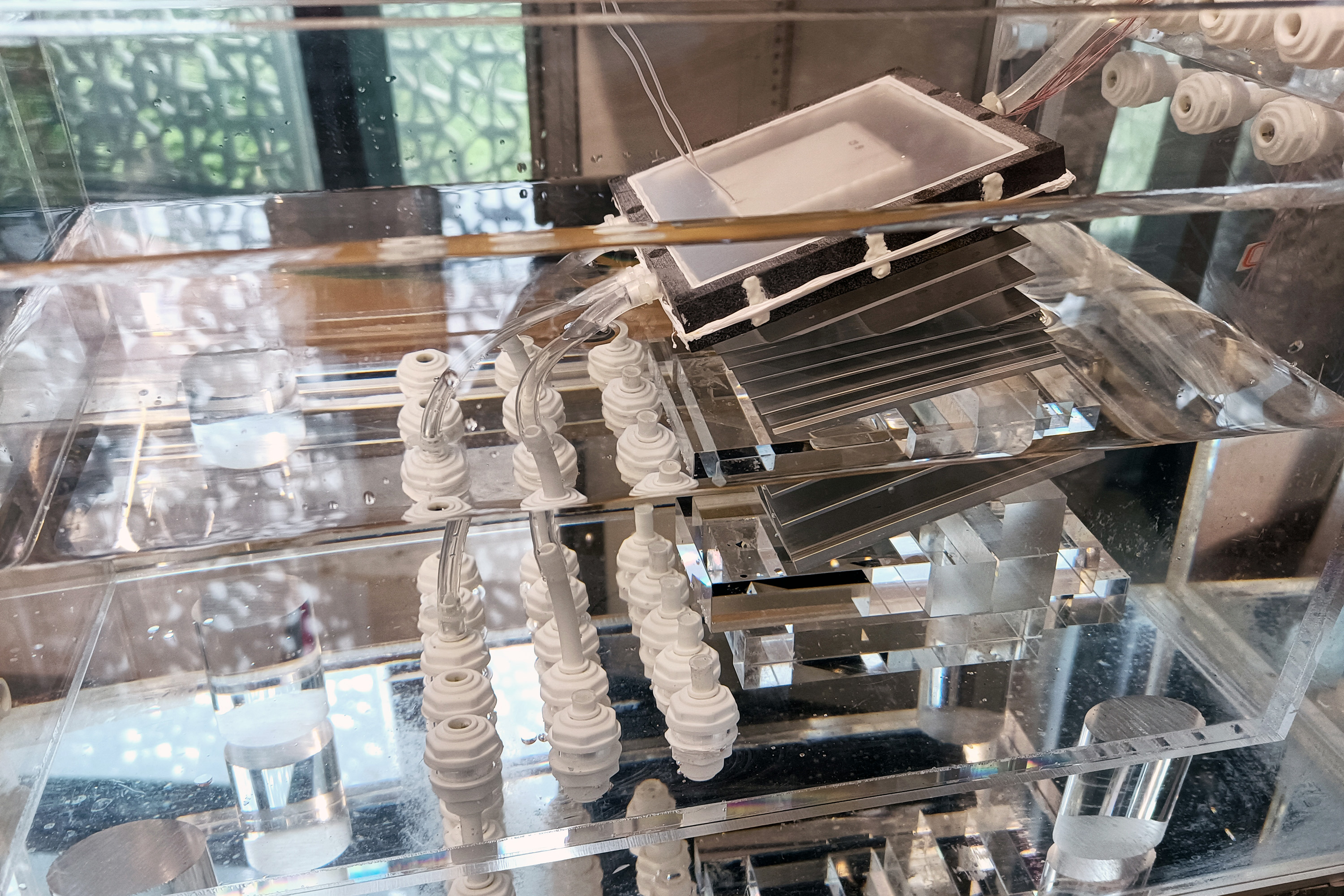Engineers at MIT and in China are aiming to turn seawater into drinking water with a completely passive device that is inspired by the ocean, and powered by the sun.
In a paper appearing today in the journal Joule, the team outlines the design for a new solar desalination system that takes in saltwater and heats it with natural sunlight.
The researchers estimate that if the system is scaled up to the size of a small suitcase, it could produce about 4 to 6 liters of drinking water per hour and last several years before requiring replacement parts. At this scale and performance, the system could produce drinking water at a rate and price that is cheaper than tap water.



Suitcase sized device? Only one or two of them nearby? Then that’s not a problem.
If you scale it to industrial sizes/quantities then the extra salinity in the area where you dump the waste products becomes an issue.
Eg my coastal city uses about 135 megalitres of water a day. Supplying all that from seawater requires you to put about 5 metric tons of salt somewhere, every 24 hours.
Stick 5 tons of salt a day directly in one place in shallow waters just offshore and you’ll end up with a dead zone a mile wide pretty quickly.
So now you’ve got to water that salt down into something that’s only slightly saltier than usual and that can be difficult because for my example 135 million litres of water a day, you want to dilute the waste by at least 10x that (to make it approx 10 percent saltier) and now you’re cycling a billion-plus litres a day around the place.
So this is pretty cool stuff, but just need to be careful with the side effects when it’s scaled up.
As I understand it such “waste salt” is usually returned to the ocean in the form of brine. The brine is denser than the ocean water around it so it flows down the slope of the land like a river into the deeps where it eventually dilutes back into the ambient water.
Brine flows and brine pools happen naturally in some places in the ocean already. They’re common underneath sea ice - sea ice is pure water and brines flow out of it as it forms. There are brine pools in the depths of the Mediterranean because that sea has greater evaporation than it does fresh water inflow. It’s not some new horror humanity is inflicting on the ocean. If care is taken with routing the brine it shouldn’t cause much trouble to the ecosystem.
It’s already a problem in some areas. It’s the scale that we do things at that causes the problem.
CO2 also exists in large quantities by natural process, but when you increase it on a massive scale for a century, it adds up to disaster.
About as many as there are people living nearby.
And guess where all that water ends up?
It’s a closed circle so if you don’t transport the water far away it should just go back to the sea.
Also the sea is kind of large…
It’s not about the global or countrywide scale. It’s about the local scale. If you take a cup of salt and eat it, it’s going to end back up in the ocean eventually, but it’ll make you sick before it gets there. Dumping salt into an area is going to screw with the ecosystem in that area, in a major way. We actually have similar problems in many areas due to stuff like fertilizer runoff from people’s lawns during rainstorms, causing toxic algae blooms in ponds and around beaches.